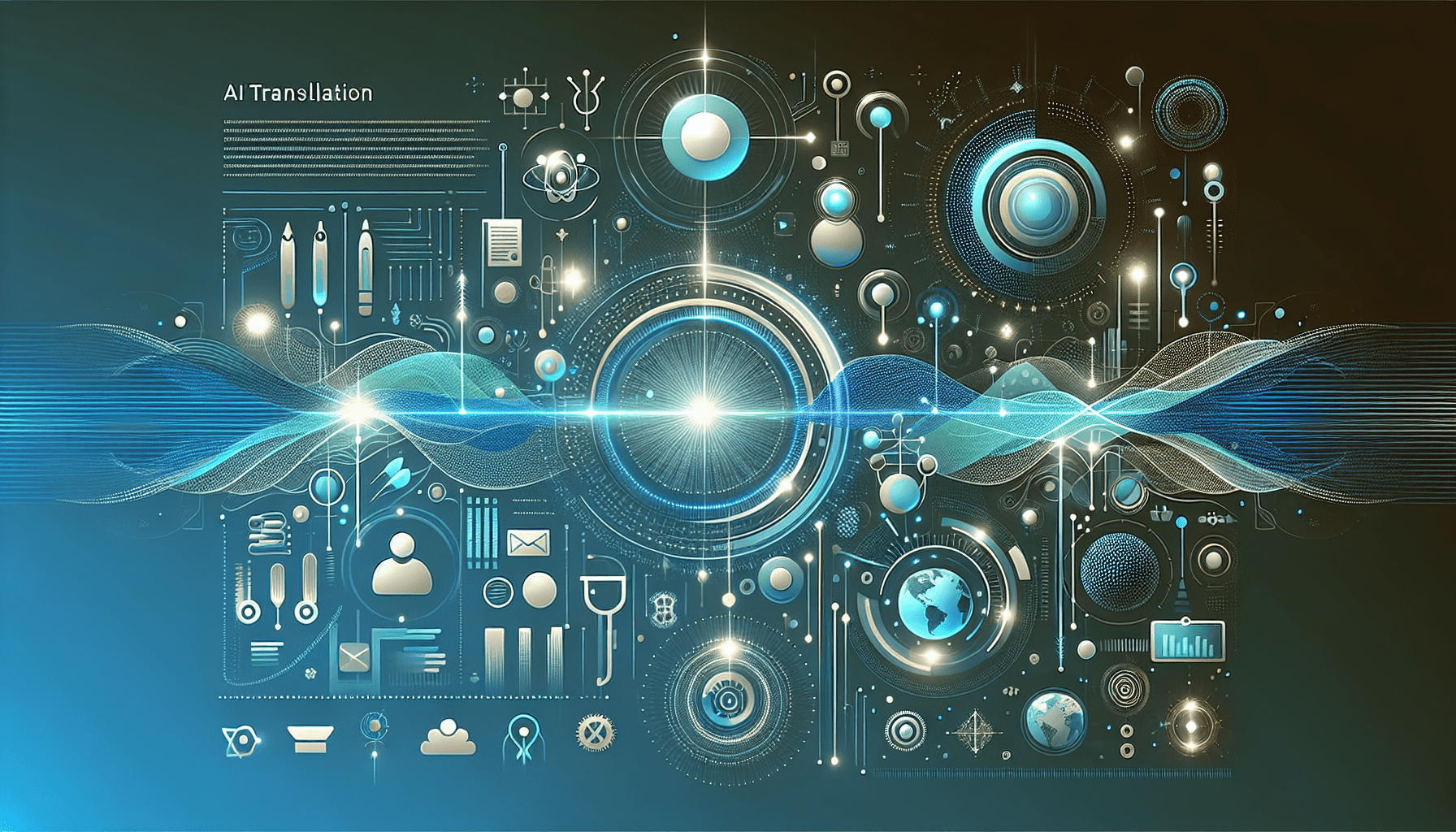About eldris
At Eldris, we automate SEO, multilingual site expansion, and EU compliance for brands scaling across Europe. Our AI-powered platform handles everything from content publishing to regulatory docs—so you don’t have to.
In This Article
- AI Translation offers unparalleled speed and scalability in multilingual communication.
- Accuracy is highest in well-resourced language pairs but still lags in specialised content.
- AI-human hybrid workflows deliver optimal balance between efficiency and linguistic quality.
- Business use cases range from customer service and marketing to legal and healthcare documentation.
- Security, bias, and contextual accuracy are critical ethical considerations to monitor.
- Future developments promise more adaptive, culturally nuanced translation tools.
Understanding AI Translation Tools
What Are AI-Powered Translators?
AI Translation refers to the use of artificial intelligence systems to automatically translate text or speech from one language to another. Unlike traditional rule-based translation systems, AI-powered translators such as Google Translate and DeepL employ neural networks and machine learning models to interpret context, nuance, and colloquial expressions. These tools ingest large multilingual datasets, allowing them to “learn” from language patterns and create more fluent, natural-sounding translations.
One major advancement in this field is the adoption of Neural Machine Translation (NMT). NMT enables AI to consider entire sentences instead of breaking them down word-by-word—a crucial improvement for both grammatical structure and contextual understanding. These systems train on parallel corpora, meaning the same content presented in multiple languages, helping fine-tune output for increasingly accurate results over time.

Accuracy Benchmarks in AI Translation
Comparing Accuracy in Major Language Pairs
Measuring the accuracy of AI Translation often involves benchmarking tools against human translation across different language pairs. For high-resource languages such as English-Spanish or English-French, AI accuracy has reached upwards of 80–90% under controlled conditions. These pairs benefit from extensive training data and years of tuning.
However, the story changes when evaluating low-resource languages—those with limited digital corpora or complex grammatical systems. Translation into and from languages like Swahili, Basque, or even certain Chinese dialects remains more error-prone. These cases often involve missing subtle metaphors, idiomatic expressions, or context-dependent word choices.
Within scientific and legal domains, precision is paramount. Studies show that AI Translation still struggles with domain-specific terminology without human post-editing. For instance, a misinterpreted clause in a legal contract could alter its enforceability. Thus, while AI handles casual and general content remarkably well, professional documentation requires additional scrutiny before use.
“For mainstream language pairs, AI Translation now rivals human performance in readability and flow—but accuracy dips in specialised or low-resource scenarios.”
Efficiency Metrics and Translation Speed
One of AI Translation’s most heralded benefits is speed. Modern neural translation engines can process thousands of words in seconds—a task that would take human translators hours if not days to complete. This efficiency is transformational for industries requiring rapid content turnaround, such as e-commerce, travel, and digital publishing.
Additionally, automation enables round-the-clock availability. AI systems don’t need breaks or sleep, meaning global businesses can service clients in multiple languages at any hour. For example, international customer support teams now deploy AI chatbots with real-time language translation capabilities, streamlining both queries and resolution times.
From a workflow perspective, this swift processing opens new doors for iterative translation. Teams may first use AI to localise content and then employ linguists to refine tone, accuracy, and cultural appropriateness. This hybrid model significantly reduces time-to-market while maintaining linguistic quality standards.
AI vs. Human Translation: Pros and Cons
While the speed and scalability of AI Translation are impressive, they come with trade-offs. Human translators excel in tone, cultural nuance, and adaptiveness, areas where AI is still playing catch-up. For example, a human linguist might note that a festive idiom in English doesn’t carry the same impact in Japanese—and recommend a culturally relevant alternative. AI, even with its training, often provides literal translations that may fall flat or cause misinterpretations.
On the flip side, AI excels with consistency, especially in repetitive technical texts or data-heavy documents where mechanical accuracy prevails over literary flair. It also allows for scalable translation in scenarios where budget or time constraints make human translation impractical.
Organisations must weigh these factors carefully. For technical manuals or user reviews, AI may suffice. For brand campaigns or literary translation, human expertise remains invaluable. Hybrid approaches, leveraging both tools and humans, are becoming the norm.
Business Applications of AI Language Tools
In today’s hyper-connected economy, AI Translation is powering multilingual expansion like never before. E-commerce giants automatically translate product listings, reviews, and FAQs into dozens of languages. Travel platforms use AI to localise booking pages, while financial firms deploy machine translation for compliance documentation.
A notable use case involves customer support. AI tools help businesses offer multilingual support via chatbots and helpdesk tools, reducing wait times while improving accessibility. Further, digital marketing firms employ AI to tailor social media campaigns across geographies in minutes.
Another emerging application is within content management systems (CMS). Platforms like WordPress and Drupal are integrating AI APIs to deliver real-time content localisation options—empowering editors to generate language-optimised content without leaving their dashboard.
Integrating AI Translation in Your Workflow
Best Practices for Seamless Integration
Successfully leveraging AI Translation within your business starts with strategic implementation. Begin by identifying high-impact use cases—such as user documentation, product descriptions, or customer support materials. Then, choose a reputable translation AI platform such as DeepL, Amazon Translate, or Google’s AutoML Translation.
Integration should be API-first to allow automation within your existing tools. For example, link the translation engine with your CMS or customer support platform. Equally important is quality control. Always build in a human review process for high-stakes content. Post-editing by expert linguists bridges the accuracy gap and upholds quality assurance.
Lastly, measure ROI by tracking metrics such as content turnaround time, user engagement in localised regions, and reduced translation spending. Continuous iteration based on these analytics will help fine-tune your workflow.
Limitations and Ethical Considerations
Despite substantial progress, AI Translation comes with limitations—and organisations must address these responsibly. Misinterpretations remain an ongoing risk, particularly in legal, medical, or technical text. Over-reliance on AI could result in reputational or legal consequences if poor translations go unchecked.
Bias is another concern. AI models often inherit biases present in training data. For instance, gender bias or cultural insensitivities may unintentionally appear in output. Developers and users alike must monitor outputs and consider bias-mitigation strategies.
Further ethical questions arise around privacy and data sovereignty. Feeding confidential documents into cloud-based AI systems may violate compliance obligations such as GDPR. Therefore, it is critical that organisations choose secure platforms and understand data handling policies thoroughly—see Comprehensive guide to top AI translation tools for further reading.
Future Trends in AI Translation
The future of AI Translation looks promising with advancements in multilingual modelling, context-aware systems, and user-specific customisation. We can expect AI tools to better understand tone, regional slang, and target audience through continued deep learning.
Zero-shot translation—where AI translates between two languages it hasn’t directly trained on—will further expand capabilities. Also, culturally adaptive translation algorithms are under development. These aim to move beyond syntax and focus on semantic, tonal, and cultural alignment of language.
Real-time speech-to-speech translation is also maturing. Devices offering near-instant interpretation will soon become more mainstream, enabling dynamic, multilingual conversations in real-world settings like international conferences or traveller interactions.
Industry Use Cases and Case Studies
Industries across the board are embracing AI Translation. In healthcare, hospitals are translating patient instructions and consent forms on-demand. Governments use AI to localise public notices and digital services for immigrants and non-native speakers.
A notable example comes from the e-learning sector. Language-learning platforms now use AI to customise translation based on proficiency level, helping users grasp both words and context better.
Another case study involves a global tech company using AI to auto-translate software documentation in over 20 languages. This cut localisation time by over 60% and allowed support teams worldwide to resolve tickets faster. Visit Learn more about AI Translation and Multilingual Expansion for more use cases.
Retailers have also transformed their supply chain communications by deploying AI to translate vendor contracts and shipping documentation, minimising delays caused by linguistic inconsistencies.
AI’s Role in Global Multilingual Expansion
Breaking Language Barriers on a Global Scale
As globalisation intensifies, the demand for seamless multilingual communication is no longer optional—it’s mission-critical. AI Translation offers the infrastructure to support this evolution. From startups breaking into foreign markets to Fortune 500 firms coordinating multi-regional teams, the impact is profound.
AI removes friction in cross-border communication, enabling marketing teams to launch synchronised campaigns in multiple regions without language bottlenecks. It also democratises access to global content, letting users consume videos, blogs, and news in their native tongue.
Moreover, AI Translation serves as a powerful tool in education, allowing institutions to provide curriculums to learners worldwide regardless of geographic or linguistic background. For more on how AI supports education, explore Read a related article.
Final Thoughts and Strategic Takeaways
AI Translation stands as one of the most transformative tools in today’s digital ecosystem. By harnessing huge computational power with nuanced language models, it delivers on both speed and accessibility. However, for all its potential, users must remain vigilant regarding accuracy and ethical use. The optimal approach is a hybrid model—balancing the agility of AI with the insight of human expertise.
Whether you’re a global enterprise, a SaaS provider, or a public sector entity, embedding AI Translation within your communication strategy will future-proof operations and open new market opportunities. The key lies in thoughtful implementation, continuous monitoring, and an unwavering commitment to quality.
Great guide on ai-translation-tools-a-deep-dive-into-accuracy-and-efficiency – Community Feedback
How accurate are AI translation tools today?
AI translation tools usually provide high-speed translations, but their accuracy can vary depending on language pair and context. They are continually improving with advancements in machine learning, although human review is often needed for nuanced texts.
What makes AI translation more efficient than traditional methods?
AI translation automates and accelerates the translation process, allowing businesses to scale global content quickly and cost-effectively. Features like translation memory and instant language detection enhance overall efficiency.
Are there limitations to using AI for language translation?
While AI tools offer speed and convenience, they struggle with idioms, metaphors, and cultural context. Final review by professional translators is recommended for critical or creative content.
Can AI translation tools be integrated into business workflows?
Yes, many AI translation solutions offer APIs and integrations for websites, customer support, and content management systems, making multilingual expansion seamless for businesses.








